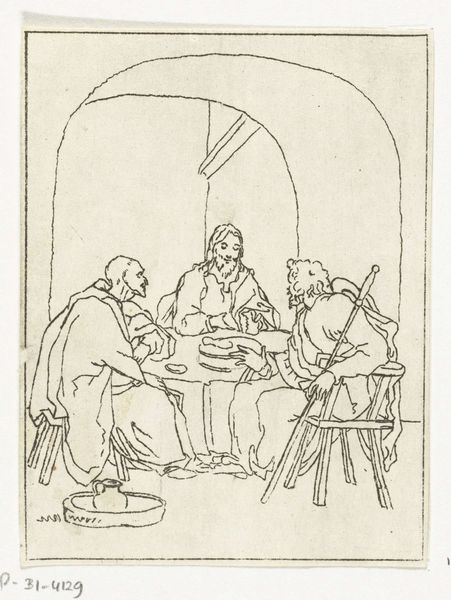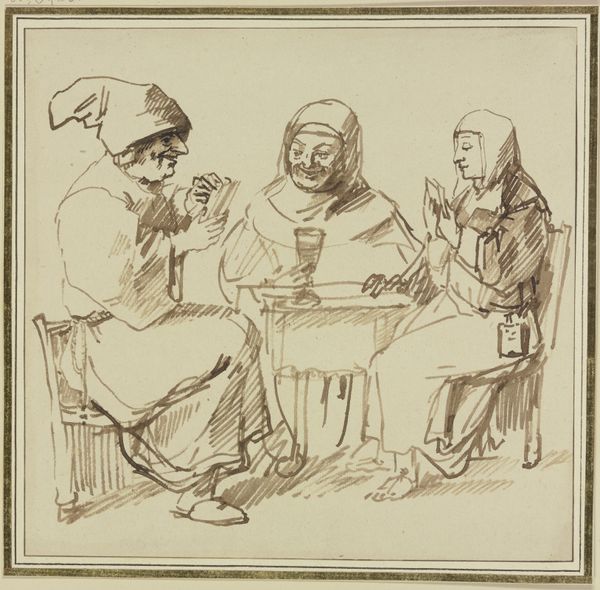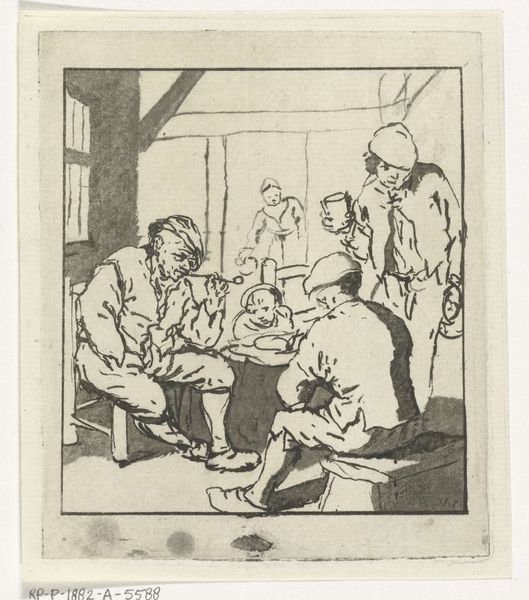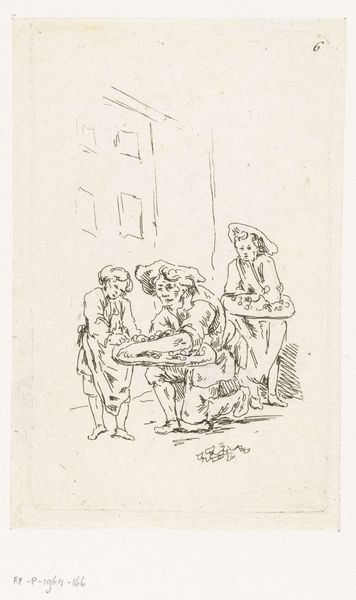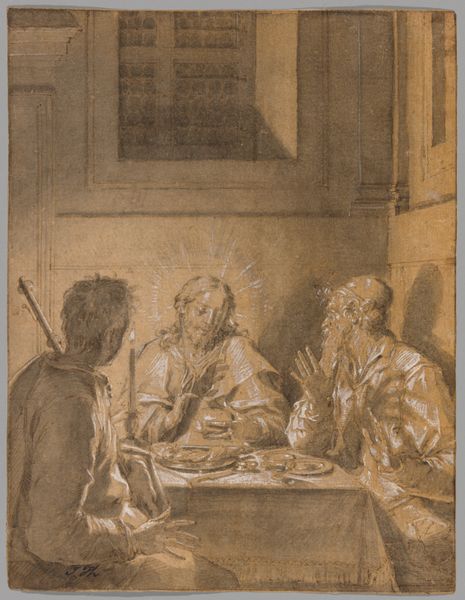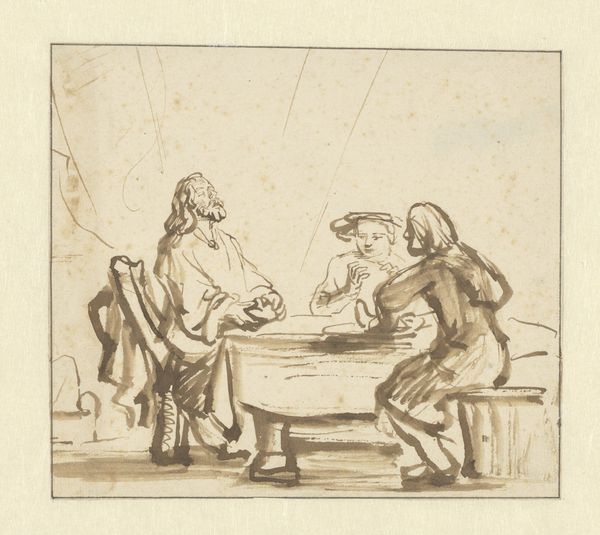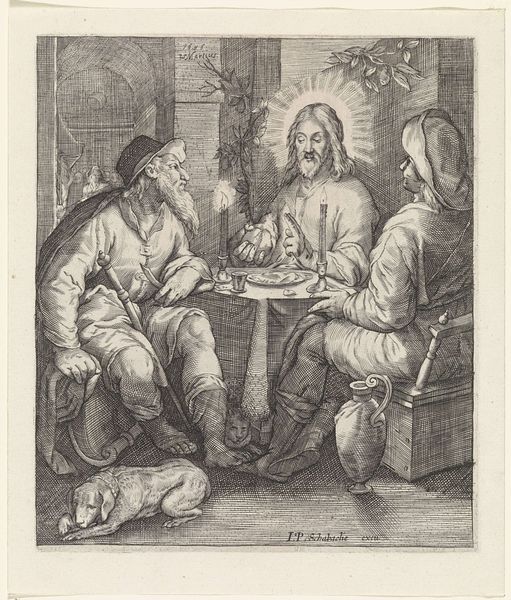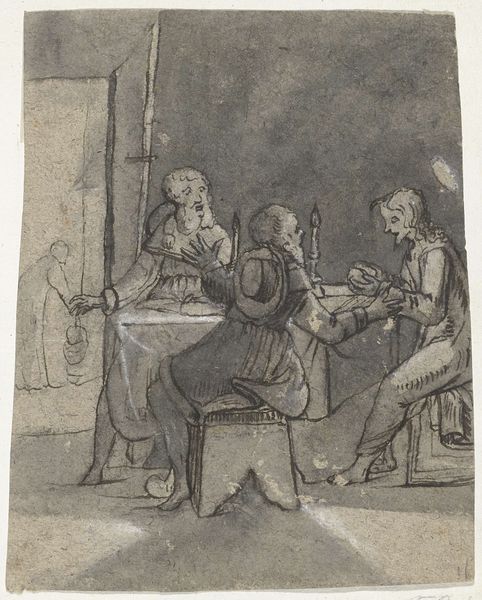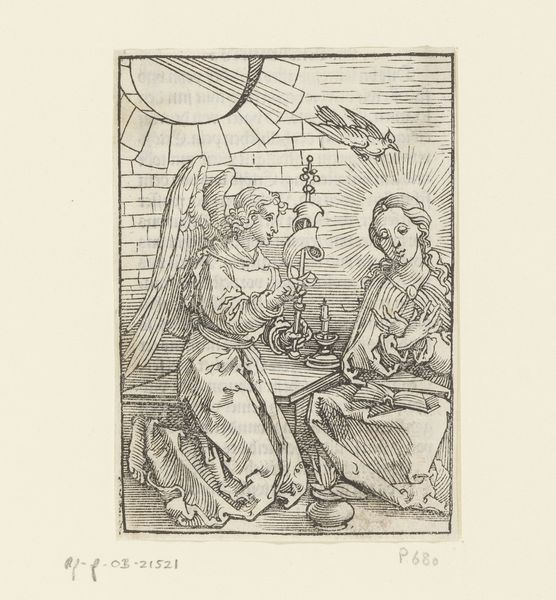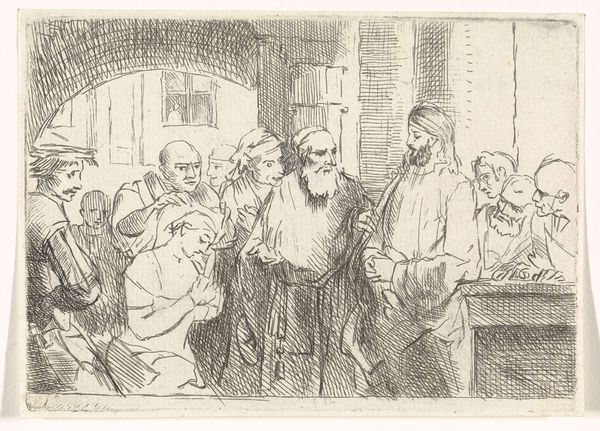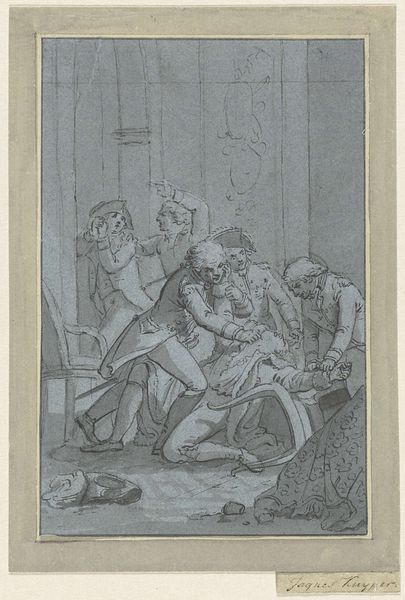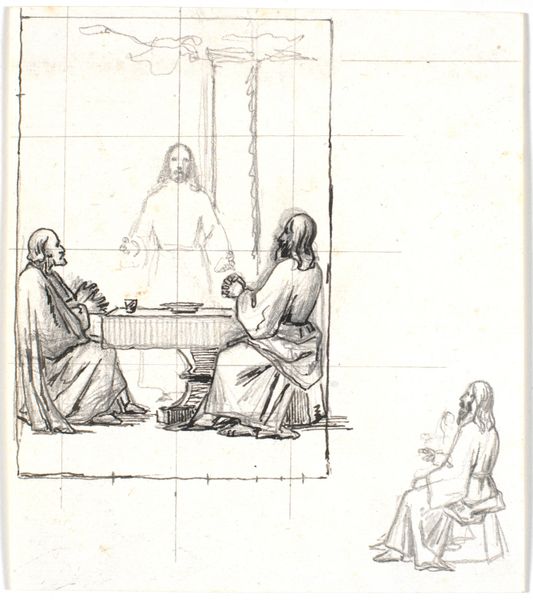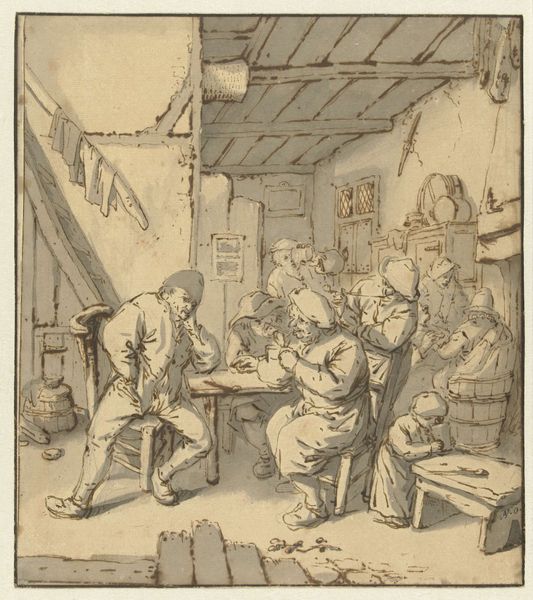
Dimensions: height 93 mm, width 70 mm
Copyright: Rijks Museum: Open Domain
Curator: Right now, we're standing in front of "Maaltijd te Emmaüs," or "Meal at Emmaus," a pen and ink drawing from the late 18th or early 19th century, attributed to Anthonie van den Bos and housed here at the Rijksmuseum. Editor: The moment I saw this, I felt a hush. It's deceptively simple. Just a few lines, really, but the air of revelation... palpable. The subdued gray washes amplify the feeling. What am I seeing here? A sacred secret? Curator: It depicts the biblical scene where the resurrected Jesus reveals himself to two disciples during a meal in Emmaus. Historically, such scenes offered a sanctioned avenue to reflect on faith and the Church's role in interpreting the divine. Remember, representations, and even interpretations, were tightly controlled. Editor: You’re so right, it’s more than just ink on paper; it's access to belief in visual form. It almost feels like peering through a keyhole into a very private moment. I feel as if I shouldn't be watching, they should be enjoying a special reunion dinner with just themselves in the room, unbothered. I imagine that is part of the brilliance behind his choice of medium too: a line and wash are humble tools for an artist to render something so precious, divine. Curator: Absolutely. Also, the artist choosing to portray this specific episode indicates perhaps the rising individual relationship with religious themes that we observed during this time. Paintings and drawings, though still under the eye of institutions and commissions, allowed some measure of re-examination. Genre paintings grew more widely favored. Editor: I also admire the details. The simple table setting, the jug on the floor...they aren't embellished, there's something raw. Each character even looks a bit astonished by the happenings taking place within their party! Yet it has this feeling of comfort to it. Curator: That rawness could also signify a shift away from overly stylized depictions that we saw during the Baroque period that, in other pieces of art, perhaps, favored the elites. Simpler settings allowed more people to identify with it personally. Editor: This quiet drawing really speaks volumes, doesn't it? The use of light and shadow... I think it really evokes such a powerful narrative even now, as we stand here. The lines really are exquisite and that the setting isn't ostentatious feels all that much more poignant. It shows faith and belief at a humble ground level. Curator: Indeed. And, for me, it speaks of how the institutions, while seeking to maintain some measure of order, inadvertently contributed to art that could spark personal reflection during changing times. Editor: Right. Thanks, I guess it shows how we bring both our perspectives to create more layered views when examining the significance of the art.
Comments
No comments
Be the first to comment and join the conversation on the ultimate creative platform.

